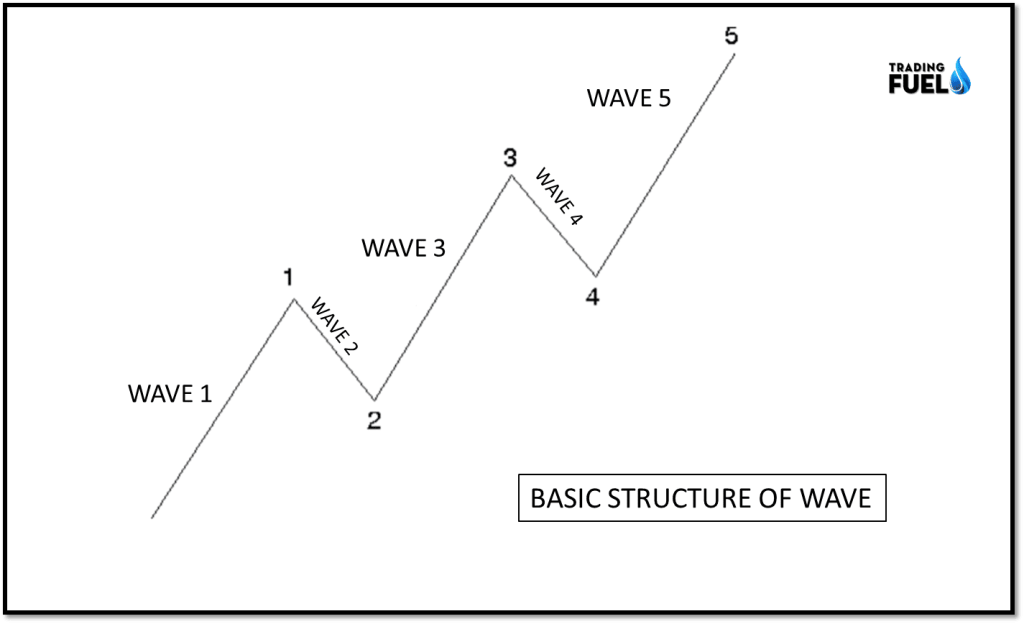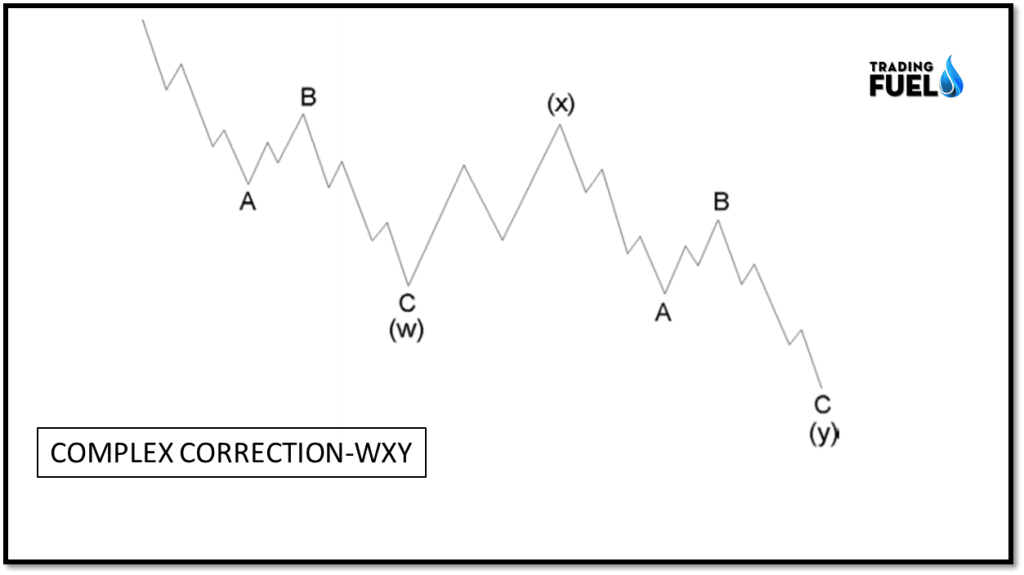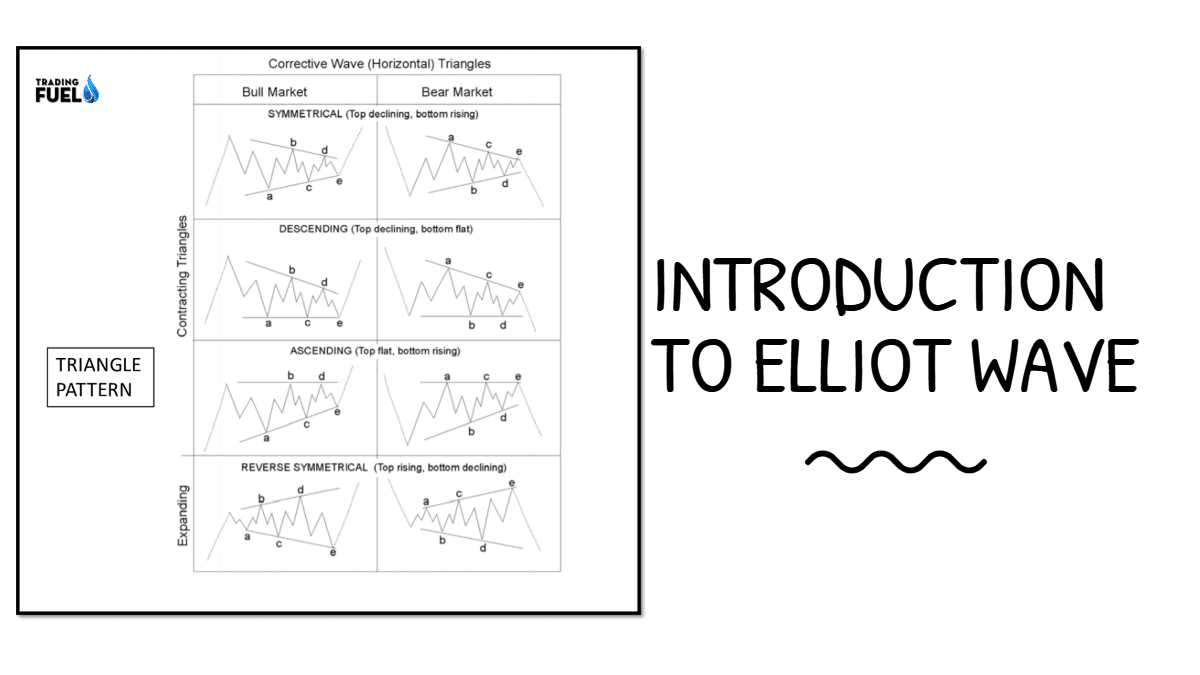The Elliott wave theory was introduced by ralph nelson Elliott. Who was Inspired by the Dow Theory and by observation found throughout nature?
Elliott stated in his theory that the movement of the stock price is predictable by observing and identifying a repeating pattern.
In the direction of the trend are always marked in five waves. Any form of corrections in the price is marked by three waves.
Three waves corrections are lettered as a,b,c. These patterns can seem in long term as well as in short term charts.
Elliot wave’s analysis is a collection of complex techniques. Approximately 60 percent of their technique is clear and easy to use. The other 40 percent are difficult for a beginner.

Theory:
Elliot wave’s theory deduces price action in the condition of repeated price structure over some time. Essentially this wave price cycles consist of two major types of waves.
- Impulse wave:
- Corrective wave:
- Every impulse waves are further can be divided into 5- wave structure (1-2-3-4-5).
- The corrective waves are divided into 3- waves structure (a,b,c).
- Elliot wave has a wave within waves is the most important concept of this theory and they are repeated over and over again.
- It means market price movement is built from regular similar patterns on larger or smaller scales. Therefore one has to count the wave on a long-term yearly market chart as well as a short-term hourly market chart.

Impulse patterns:

The impulse patterns consist of five waves. These five waves can either be up or down.
The first wave is usually a weak rally with only a small percentage of the trader participating.
once wave 1 is over, then the sell-off comes on wave 2. The sell-off in wave 2 is very vicious. Wave 2 will finally end without marking new lows and the market will start to turn around for another rally.
In the initial rally of wave 3, the momentum is slow until it finally makes it to the top of the previous rally at this time; there are a lot of stops above the top of wave1.
Traders have no conviction of the uptrend and are using this rally to add more shorts.
A large number of stop-loss orders are placed at the top of wave 1.
Wave 3 starts with huge momentum and always closes above the top of wave 1. As soon as the wave1 high is exceeded, the stops are taken out. Depending on the number of stops. Gaps are left open. Gaps are quite common in wave 3 as they progress. After taking the stop out, the wave 3 rally has caught the attention of traders.
Rules of wave count:
- Wave 2 should not close below the low of wave 1.
- Wave 3 can never be the shortest.
- Wave 4 should not overlap with wave 1, except for wave 1,5, a, or c of a higher degree.
Guideline of wave count:

- Rules of alternation: wave 2 and wave 4 should unfold in two different waves’ forms.
- An impulse wave is always subdivided into five waves.
- Wave 1 is a motive wave that is subdivided into an impulse or a leading diagonal.
- Wave 2 subdivides into a zigzag, flat, or combination.
- Wave 2 never moves beyond the start of wave 1 (rules-1).
- Wave 3 never moves beyond the end of wave 1 and is never the shortest (Rule-2).
- Wave 5 is subdivided into an impulse or an ending diagonal.
- Wave 4 is subdivided into a zig-zag, flat, triangle, or combination.
- Wave 4 never move into the territory of wave 1(rule-1)
Extended waves- among waves 1, 3 and5, only one can be unfolded into extended waves. ‘Extension’ means the wave is drawn out in nature and sub-waves are clear about the wave of a higher degree.
In the diagonal triangle which occurs at wave 5, the momentum is so weak that the 2nd and 4th waves overlap with each other, and such motive wave is called a diagonal triangle.
5th wave failure: in some other circumstances, wave 5 is so weak that it even cannot surpass the top of wave 3, causing a double top at the end of the trend.
Elliot wave correction:
Correction is very hard to master. Most Elliot traders make money during impulse patterns and then lose it back during the corrective phase.
An impulse is always followed by a corrective pattern.
Corrective patterns can be grouped into two different categories.
1. Simple correction:
There are several patterns in a simple correction. The simplest pattern is a zigzag correction. a zig-zag correction is a three-wave pattern where wave b does not retrace more than 75% of wave a. wave c will make new lows below wave a. the waves a of a zig-zag correction always has a five-wave pattern.

Triangle: A triangle has internal sub-waves of 3-3-3-3-3, and marked as a, b, c, d. it is most likely to be seen at wave 4 or it may occur in wave 2 or wave B as a part of the correction. A triangle can be expanding and contracting.

Flat: A flat has internal sub-waves of 3-3-5 and is marked as a, b, c .it is most likely to be seen at wave 4. As the wave 4 corrections are more time-wise than price-wise. Wave C is an impulsive wave with having a total of 5 internal waves.

2. Complex correction.
Elliot named the sideways combination of corrective patterns “double three” and “triple threes”.
A single three can be any one zigzag or flat, a triangle and combination of such three pattern forms complex correction and in this context is called a “three”.
A double or triple three then is a combination of simpler types of correction, including the various types of zigzags, flat and triangle.
There appear to be flat correction ways of extending sideways action.
With double and triple zigzag, each simple correction pattern is labeled W, Y, and Z.
The labeled X can take the shapes of any corrective patterns but are most commonly zigzag.

Conclusion:
In this blog we have discussed the basic layout of Elliot wave theory only, Elliot wave is quite complex and difficult to underhand because of the implication of several principals at the same time. Which open chances for different scenarios that can take place. Elliot wave takes a lot of time to master. It’s not a complete science. It is an act of counting the wave and finding different possibilities that may occur.
Contain & Image ©️ Copyright By, Trading Fuel Research Lab

